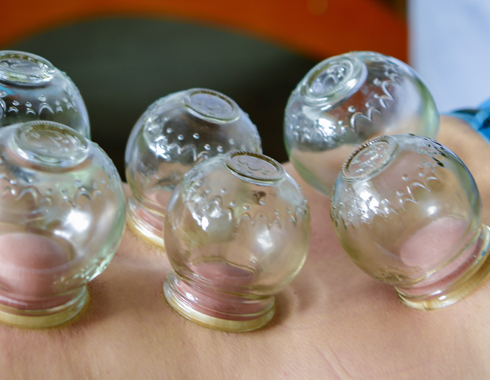Cupping

There are three main categories of cupping performed today:
- Dry cupping is a suction-only method.
- Wet cupping may involve both suction and controlled medicinal bleeding.
- Needle cupping in which the therapist first inserts acupuncture needles and then puts cups over them.
When the hot cup is placed on your skin, the air inside the cup cools and creates a vacuum that draws the skin and muscle upward into the cup. Your skin may turn red as the blood vessels respond to the change in pressure.
With dry cupping, the cup is set in place for a set time, usually between 5 and 10 minutes. With wet cupping, cups are usually only in place for a few minutes before the practitioner removes the cup and makes a small incision to draw blood.
Special cups are placed on your skin for a few minutes to create suction. People use it for many purposes, including to help with pain, inflammation, blood flow, natural detox, relaxation and well-being, and as a type of deep-tissue massage.
It involves placing cups on the skin to create suction. The suction may facilitate healing with blood flow. Suction helps facilitate the flow of “qi” in the body. Qi is a Chinese word meaning life force. Many Taoists believe that cupping helps balance yin and yang, or the negative and positive, within the body. Restoring balance between these two extremes is thought to help with the body’s resistance to pathogens as well as its ability to increase blood flow and reduce pain.
Cupping increases blood circulation to the area where the cups are placed. This may relieve muscle tension, which can improve overall blood flow and promote cell repair. It may also help form new connective tissues and create new blood vessels in the tissue.




